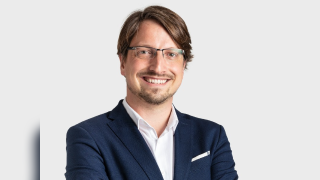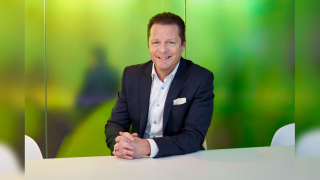|
2012 was something of a landmark year for Interoute. It extended its network into Turkey, Russia and Asia. It made a string of strategic acquisitions and partnerships. And it capped it all off in November by picking up the Capacity Award for ‘Best pan-European Wholesale Carrier’.
But of all the company’s achievements in the last 12 months, it is the potential of the company’s virtualised hosting platform that really gets Interoute’s CEO Gareth Williams’s blood pumping.
At the start of 2012, Interoute launched its virtual data centre (VDC) product - a private and public cloud computing platform built into the company’s pan-European MPLS/IP network. According to Williams, VDC has gone on to impressively generate over €1 million in revenues since January.
“We see virtualisation as the future,” says Williams. “It is coming to the forefront now and you can’t hide anymore at the back. Cloud is an enabler for businesses. It’s something they can try and if it fails, they haven’t spent millions.”
Show me the money
Williams is a man who is always looking forwards and never back. Joining Interoute in 2002, within a year he was running the entire sales and marketing department, and by the end of 2007, he was appointed CEO.
Under his leadership, the company has successfully balanced substantial investment in new services and expanded infrastructure with maintaining healthy profitability. As a result, Interoute’s top-line revenues soared to €366 million in 2011, a stunning 24% increase over the same period in 2010.
“From the offset, we had very simple goals for the business,” he says reflecting on the company’s rise. “We have a permanent review of how we can do something cheaper, faster, better.”
Williams takes an extremely hands-on approach to management. He holds an hour-long induction with every new member of staff, explaining in great detail the company’s values and idiosyncrasies. “There’s no special sauce we give people, but we try to embed our values in them,” he says.
It’s fair to say that Williams also monitors the company’s expenditure meticulously: “We don’t waste share- holders’ money.” Pinching a line from his favourite film ‘Jerry Maguire’, Williams has set up an internal ‘show me the money’ initiative, where every Interoute employee is encouraged to contact him directly with ideas to save the company money. He estimates this has saved the company approximately a quarter of a million euros in three years.
Of his staff, he comments that the company attracts and retains people who “like to take responsibility, fight and win customers”. “It’s been a hard road for Interoute building our business in 10 years,” he adds.
Unified approach
Adaptability has also been at the heart of Interoute’s ascent, and it is why the company can be seen aggressively pursuing opportunities today in the world of cloud.
The introduction of an applications management product set, along with the launch of the VDC solution, form a core part of the company’s unified ICT strategy. “It is the fastest growing part of our business,” says Williams. “The growth of our business was 15% in Q3 2012, but unified computing far outstripped that.”
Having spotted an opportunity in the market, Williams isn’t about to shy away from it. The company made considerable investment in the tail-end of 2012 to support its ICT strategy. It made moves to accommodate the VDC platform in both its Berlin facility and its Paris data centre, then committed to launching a new data centre in Ghent, Belgium, which is due to be operational in January 2013.
This reflects what Williams perceives as a change in customer confidence in virtualisation. Inspired by the success of virtualisation in the retail sector, the adoption curve for large enterprises has soared.
“Most customers don’t believe they have the right answer. They either go to external integrators, consultants or some go to the massive names such as IBM and Logica. Others come to the operators and ask what we can be doing?” he says.
“One of the reasons we bought Quantix last year was that we recognised evolutionary migration services are a key feature for us going forward, and the company possessed a key skill base to develop that,” he adds.
The partnership Interoute signed with Europe’s football governing body UEFA at the end of 2011 has almost become a showcase for its hosting provider capabilities.
Interoute’s pan-European cloud service supported UEFA during the 2012 European football championship last summer, and will continue to support UEFA’s business, football tournaments and events over the next year and a half.
“We manage their web presence, as well as their internal and external IT. We are one and half years into that partnership and already we are talking about where we can take their large private cloud by year three. What can we virtualise next?” he says.
The engagement point with the customer, he identifies, has become much earlier. “It’s no longer a case of ‘we’ve decided what the solution is and gone out and bought it’. Now it’s more the case of – what is it we should be virtualising? What are the security concerns of building this platform?”
Security matters
Arguably the largest thing holding back consumer confidence in virtualisation is security. The threat is very real as Interoute discovered during the European championship, when it protected UEFA’s website and key logistics applications from repeated DDoS attacks.
“Security across every level is just going to grow and grow,” he says. “There is the straightforward concern of malicious attacks. But then you also have the concern of leakage,”
There are in fact endless questions facing enterprises consuming cloud services: “Who has access to what programmes? Who is running third party programmes on their PC? Where do you firewall? How do you protect your internal IT assets when people are bringing their own devices to the party?” Williams exemplifies.
He believes, however, all this could present an opportunity for operators, particularly as customers increasingly ask operators to do more monitoring of networks. “We have our own security operations centre in Prague and it is a very fast growing side of our business, both from a network security perspective and a managed hosting perspective,” says Williams.
He admits security is a grey area for both businesses and operators. While customers are clearly encouraging operators to move deeper into security, there’s a fine line between ensuring safety on networks and allowing the customer to go about their routine business.
“Customers want various prevention levels. But many are worried about doing that on the operator side as you could be really affecting the day to day business of your customers,” he says. “Essentially customers want to carry on doing business, and you can’t just stop the problem in a draconian way.”
2013 and beyond
The question now facing Williams, is will he be able to replicate Interoute’s success in 2013? Certainly from a network point of view, the company appears unlikely to expand aggressively as it did in 2012.
“We are hoping to expand the business more in-country, than outside. We want to consolidate what we built with Superonline in Turkey and go much deeper. In Russia, we have been fortunate to develop a good team and in MegaFon we have found a good partner, so we will build there too,” he says.
Such an approach reflects how truly Eurocentric Williams perceives the company: “We believe our key focal point and growth opportunity is being the best possible operator in Europe,” he says.
Overall, Williams predicts another busy year for the company in 2013: “We want to build bigger and bigger managed hosting solutions, and really drive our IaaS platform to more and more customers,” he says.
Interoute >>
History: Interoute’s pan-European network was completed at the end of 2002, and was expanded through the acquisition of GTS/Ebone’s metropolitan fibre assets that same year. This was followed by acquiring media services assets in 2003, an eastern European fibre network in 2004, PSINet Europe/Via’s managed hosting services in 2005, a managed services company in Bulgaria in 2006 and 51 Degrees, a London Metro business and a Swedish hosting company in 2007.
CEO: Gareth Williams became CEO of Interoute in August 2007.
Ownership: Interoute was originally funded by the Sandoz Family Foundation, which was joined later by the Kingdom of Dubai to privately fund its massive civil works project for Europe.
Network: Interoute’s network is supported by 60,000km of fibre, 21 metropolitan area networks, nine data centres and 32 co-location centres with local operations in the 26 largest cities of Europe. Its network covers the EU as well as Turkey, through nine subsea landing stations ringing the edge of Europe. To the west, the network links to North America’s major telecoms hub. To the east, the network connects the Middle East to Europe through Dubai. In the south, Africa from Cape Town to Tunis connects directly to Europe through Interoute.
Services: Interoute claims to offer Europe’s largest cloud services platform. Its Unified ICT platform serves international enterprises, as well as major European telecoms incumbents and the major operators of North America, east and south Asia, governments and universities.




